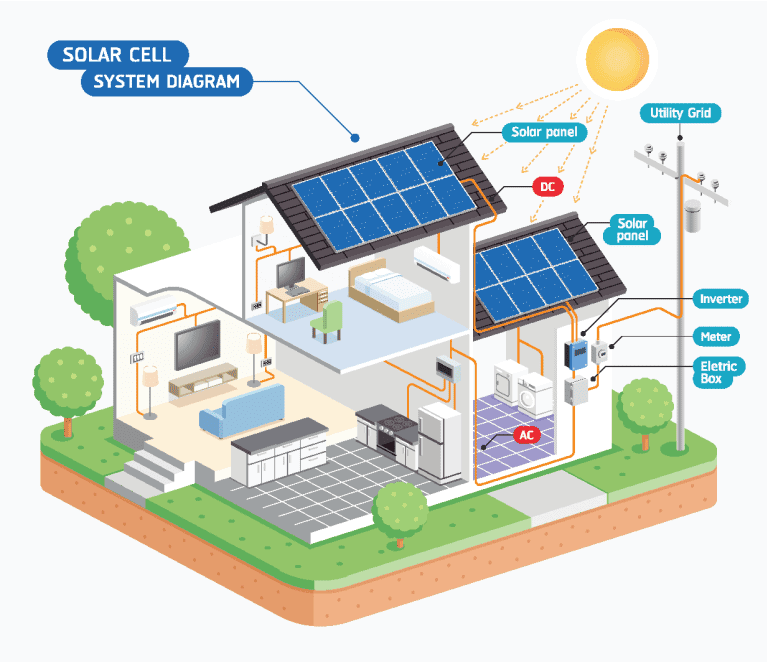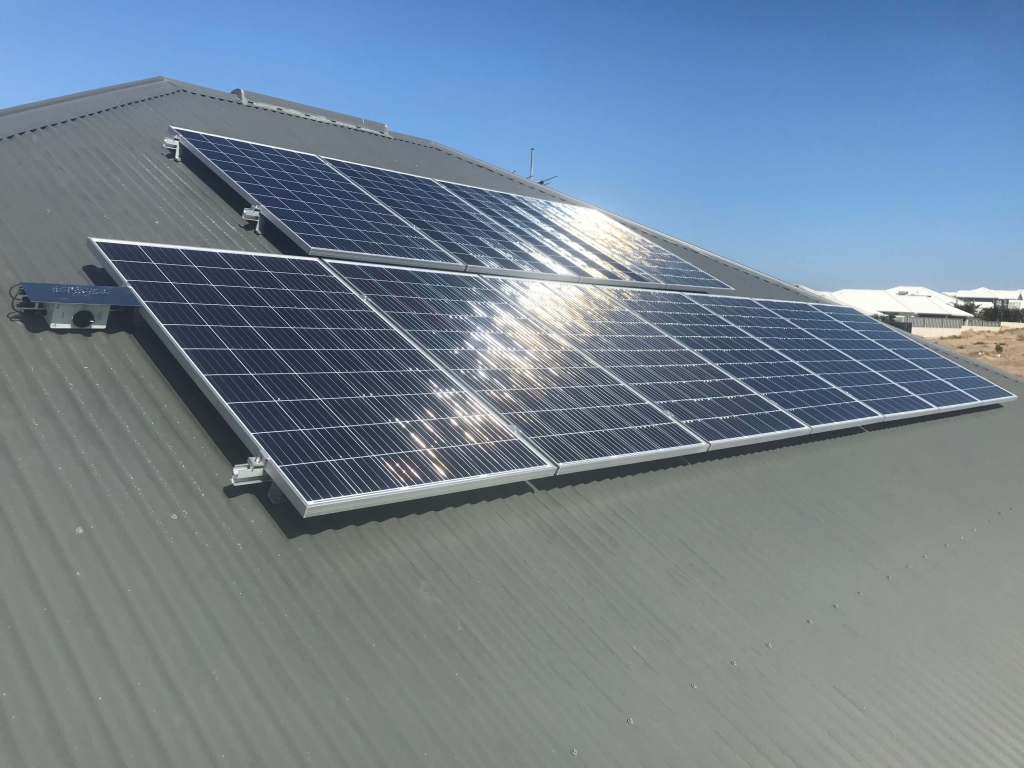When solar panels are installed, the panels collect sunlight and turn it into an electrical current. The current runs through your very own inverter and is then used as energy to power your property.
The Science Behind Solar
Solar panels convert sunlight into an electrical current, which is used to power your property. The panels collect direct current (DC) electricity which is then converted into alternating current (AC) electricity using an inverter. AC is the type of electricity used to power your house.
Excess power generated by a solar system is fed back into the main power grid if not used by the household. Power companies will pay you for this energy. For more information on the current rebates and incentives, visit our solar rebates page.

Does Solar Only Work During the Day?
Yes, solar only works when there’s sunlight. However, your solar panels can produce more than enough electricity to power you right through the night. When there is no sunlight, your home’s electricity comes from the main power grid which you are charged for by your power company.
Including a battery in your solar system enables storage of excess power for use during the night. Solar batteries are becoming more popular with customers preferring to store and use their excess energy.
It’s important to note that solar panel energy is generated through sunlight, not heat. Extremely hot days can reduce the system’s efficiency and energy output.
Components of a Solar Power System
Solar Panels
Solar panel systems are sometimes referred to as Photovoltaic (PV) systems. This is the name for the process that occurs when solar panels harvest and convert sunlight into electricity. The panels are made up of photovoltaic cells which directly produce energy. When sunlight hits these cells, the protons from the sun charge the electrons in the cell, creating a flow of electricity. The power output of solar panels is measured in watts. This indicates the amount of power the panel can produce in 1 peak sun hour.
Bunbury’s sunlight hours average around 8 hours per day. In hotter months such as December, it can reach an average of 10 hours per day. So ideally a 5kW solar system would produce roughly 32kW per day in Bunbury.

Solar Inverters
The inverter is a crucial component of your solar energy system. Its main job is to convert DC energy collected from your solar panels into AC to be used in your home.
Inverters require maintenance or replacement every 5-10 years, as it is the most hardworking component in your system. South West Solar Force recommends using a proven inverter brand to optimise your solar energy system.
Inverter size can range from 1.5kW up to 100kW. However, a typical household in WA needs a 3kW – 5kW system, with a 5kw being the most common. For larger commercial solar systems, multiple inverters may be needed. Our inverters page outlines the brands of inverters we recommend.
Panel Optimisation
Your roof’s angle, orientation, and location play a critical role in the efficiency of your solar system and the energy production of your panels. The optimal position for panels is when they are positioned perpendicular to the sun. This means the sun’s rays hit the PV panels at a 90° angle. North-facing roofs perform the best and produce the most energy in the Southern Hemisphere.
South West Solar Force can accurately calculate the optimal position of your panels. We examine the orientation and the angle of the roof to estimate your property’s solar output potential.
North-Facing Panels
Facing your solar panels North will produce the highest amount of kWs per day. This is because the sun is at its brightest at noon. This is the best option for businesses with high power demands in the middle of the day.
North-West Facing Panels
West-facing panels generate the most amount of power in the afternoon as the sun sets in the west. Although they may produce 5-12% less power than north-facing panels, they are the next best alternative.
North-East Facing Panels
East-facing panels will produce a similar output to West-facing panels during the morning. This assists households to utilise more solar energy in the morning.
East & West split Panels
Roofs directly facing east and west produce around 12% less than north-facing panels. The east/west split does have the advantage of producing power all morning and afternoon for the majority of the year. It helps to have numerous panels to produce energy from sunrise to sunset.
South-Facing Panels
As Australia is so far south of the equator, south-facing panels are the least ideal. South panels may produce an equal amount of power to north panels during summer. But outside these months, south-facing panels will generate little to no power.
